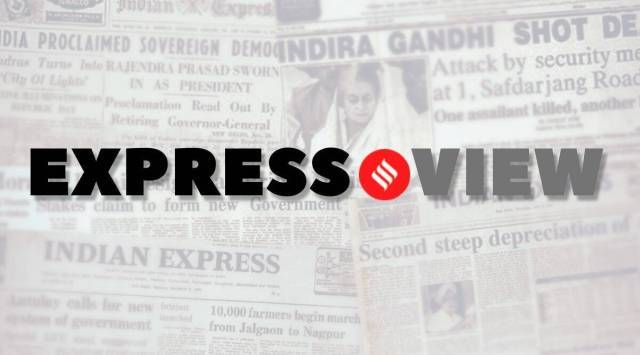
Five years after the Supreme Court laid down a water-sharing formula to address the needs of the Cauvery basin states, the longstanding dispute over the river’s resources has flared up again. Farmers associations, civil society groups and Karnataka’s Opposition parties, the Janata Dal (S) and BJP, are up in arms over the directive of the Cauvery Water Regulation Committee — the technical arm of the Cauvery Water Management Authority (CWMA), which oversees the implementation of the SC verdict — that asks the upper riparian state to release 3,000 cusecs of water per second to Tamil Nadu.
These groups staged a state-wide bandh on Friday. The Karnataka government has repeatedly expressed its inability to release water in a year in which the monsoon has played truant, especially in the state’s southern interior where the Cauvery originates.
The river is the main source of irrigation for farmers in Karnataka’s Mandya region and provides most of Bengaluru’s drinking water. Tamil Nadu, too, is dependent on it. The state has pleaded that it desperately needs Cauvery’s water in the coming weeks to meet the livelihood needs of its farmers. The river is also the main source of drinking water in several districts of the downstream state. It’s clear that a mechanism needs to be urgently put in place that addresses the concerns of both states in times of insufficient rainfall.
The recent flare-ups in the Cauvery basin — 1991, 2002, 2012, 2016 — have also been triggered by deficient rainfall. In a normal year, the river takes care of everyone’s needs. That’s why the SC’s 2018 verdict was not questioned in the last five years. The Court had not stipulated a water-sharing blueprint for distress years. However, in underlining the “need for sustainable” water use and by emphasising the “principle of equity in water allocation”, the SC did open up possibilities for an enduring solution in which there are no winners and losers. It had directed the setting up of an agency to administer water allocation. But the CWMA, set up about four months after the verdict, never really got around to initiating conversations amongst the Cauvery basin states on water-sharing during the poor monsoon years.
The Karnataka government has reportedly said that it will contest the CWRC’s latest water allocation decision at the Supreme Court. But rather than lean on the judiciary, the Cauvery-dependent states would do well to come together and plan for the river basin, which today has to meet the competing demands of agriculture, industrialisation and urbanisation.
The Delhi-based CWMA that relies largely on the expertise of engineers and bureaucrats seems ill-suited for this endeavour. Solutions ranging from disincentivising water-intensive crops to encouraging decentralised water management will require the inputs of hydrologists, economists, agri-scientists, farmers and industry bodies, and civil society groups. Most importantly, agriculturists from Karnataka and Tamil Nadu will need to talk to each other, understand each other’s fears and shed their confrontational approach.